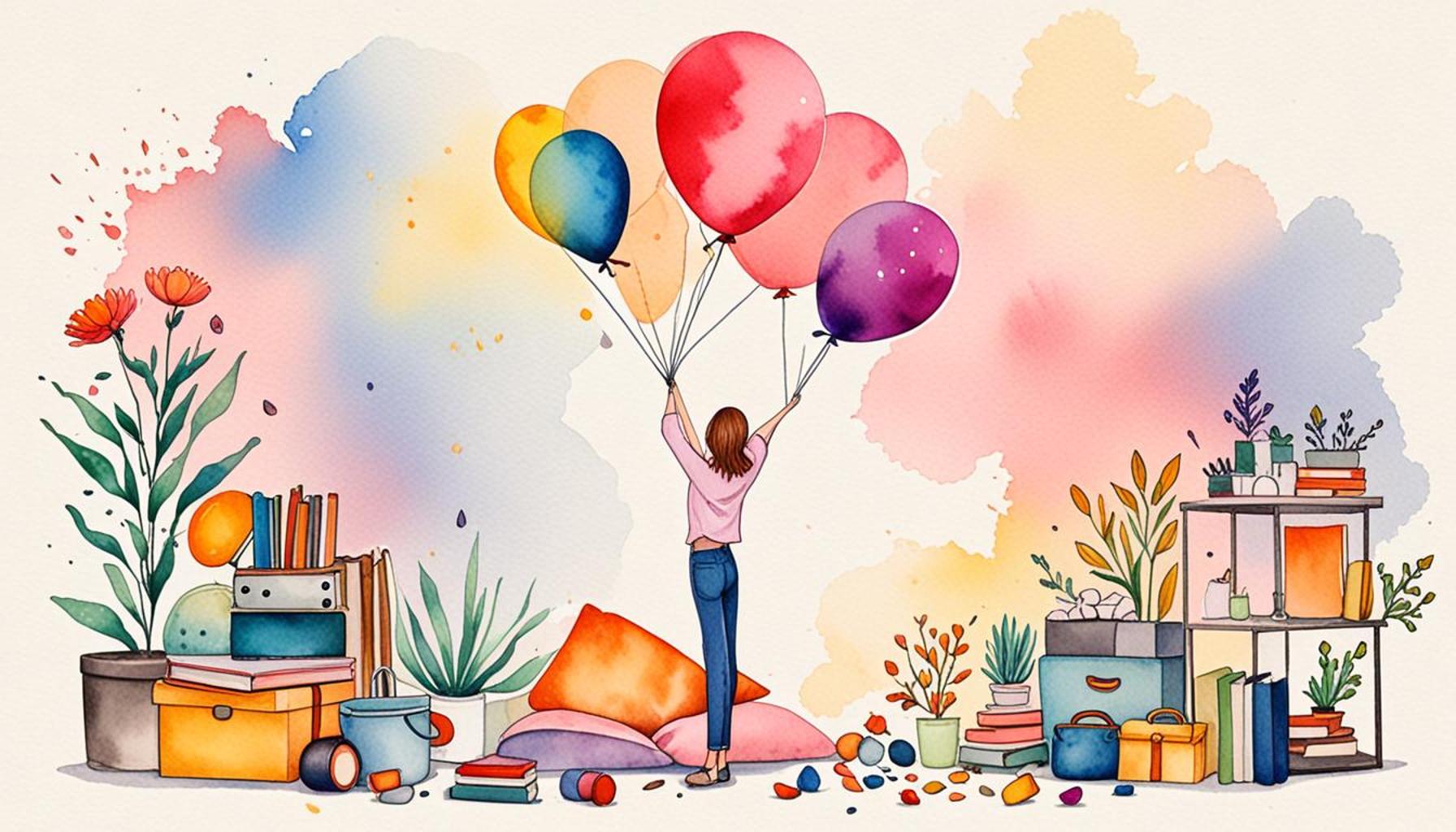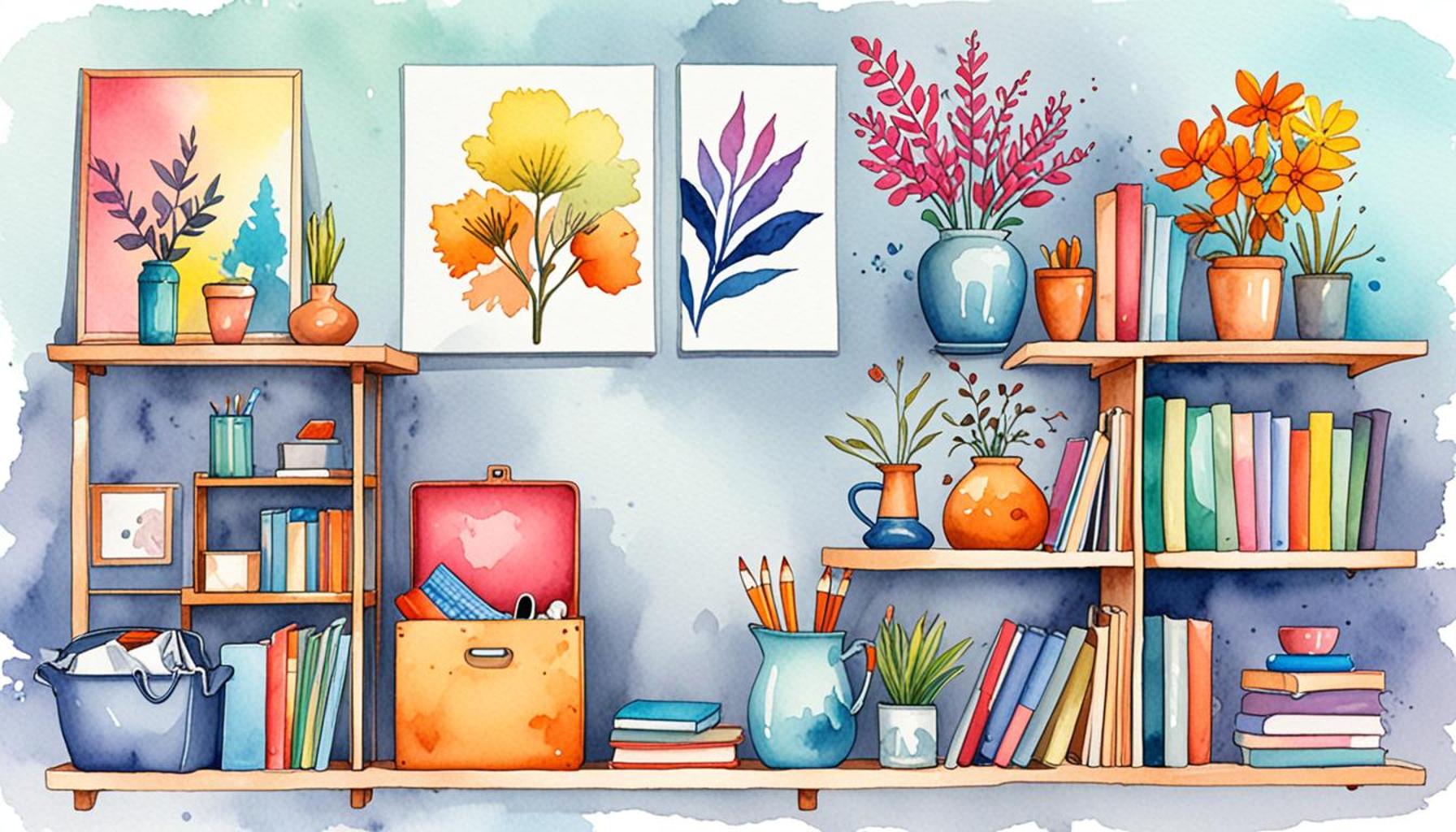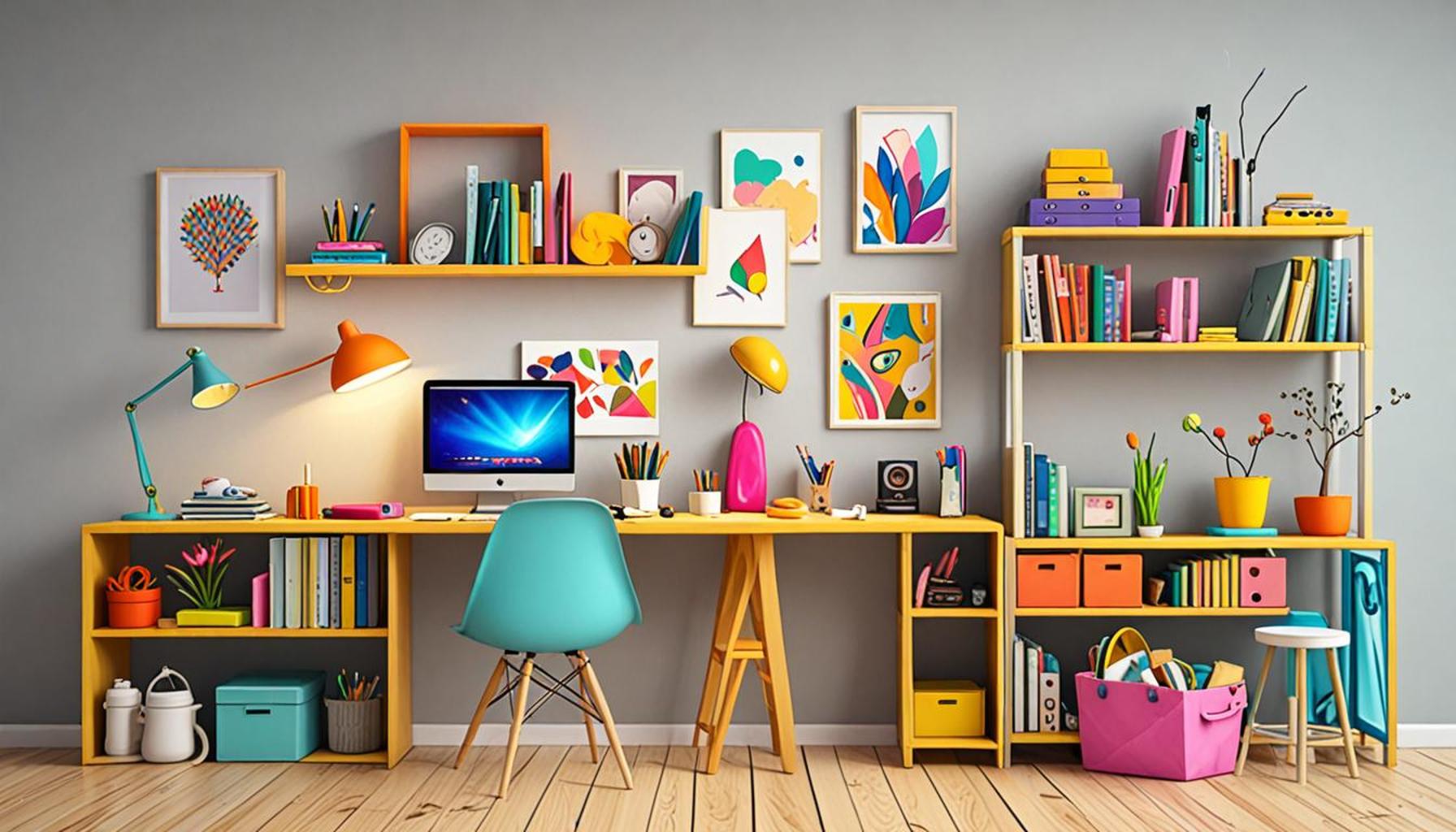The Art of Letting Go: Emotional Techniques for Decluttering Your Space

The Emotional Journey of Decluttering
Embracing the art of letting go can transform not just your physical space, but also your mental landscape. Many people struggle to part with belongings, often haunted by memories or fears linked to their possessions. This intricate dance with items that surround us emphasizes the emotional weight that clutter can impose on our lives. Understanding the emotional ties we form with objects is a crucial first step toward achieving a clutter-free and more fulfilling life.
Understanding Emotional Attachment
Emotional attachment is a powerful force. For instance, a childhood toy may symbolize cherished memories of innocence and joy, making it difficult to simply toss away. It is not uncommon for individuals to hold onto objects due to the stories and emotions tied to them. Research suggests that when we perceive value in possessions—whether it be nostalgia, love, or shared experiences—it can create significant hurdles in the decluttering process. This phenomenon is often referred to as “sentimental clutter,” where items take on emotional meanings that overshadow their physical purpose.
Facing Fear of Regret
The fear of regret often paralyzes decluttering efforts. The anxiety that accompanies the thought of letting go can lead to a state of indecision, where individuals may circle around piles of belongings without taking action. Questions like “What if I need this in the future?” or “What if I regret getting rid of it?” loom large. This fear is not unfounded, as many people grapple with the thought of losing a piece of their past or the potential utility of a forgotten item.
Overcoming the Feeling of Overwhelm
An overwhelming amount of belongings can feel suffocating, often resulting in a paralyzing inertia. When faced with an avalanche of items, it’s easy to feel like change is impossible. The burden of clutter can stifle creativity, inhibit productivity, and inhibit physical movement in one space, leading to heightened levels of stress. Understanding this sense of overwhelm is vital, as it sets the stage for seeking solutions and attempting to reclaim control over your environment.
The Benefits of Decluttering
Engaging in a decluttering journey offers distinct advantages that extend beyond merely clearing out your home. When one takes on the challenges of letting go, several benefits can emerge, including:

- Increased Clarity: A cleaner environment fosters clearer thinking, allowing for improved focus and decision-making.
- Stress Reduction: Less clutter can lead to lower anxiety levels, making way for a more peaceful state of mind.
- Enhanced Well-being: Lightening your load can promote a more positive mindset, encouraging a sense of accomplishment and freedom.
Recognizing and Addressing Emotions
By recognizing and addressing the emotions linked to our possessions, we can make informed decisions about what to keep and what to release. Techniques such as the KonMari method, which encourages individuals to keep only items that “spark joy,” or the “one in, one out” rule can serve as guiding principles in this endeavor. These methods not only facilitate the decluttering process but also promote a more mindful approach to consumption.
Join us as we delve deeper into the emotional techniques that support this transformative experience, leading to a liberating sense of ownership over our spaces. We will explore strategies that not only enhance your home but also nurture your emotional health, setting the stage for a more intentional approach to living. By understanding the emotional journey of decluttering, you can embark on a path toward meaningful change and holistic well-being.
DISCOVER MORE: Click here to uncover creative solutions
Emotional Techniques to Set You Free
As we embark on the journey of decluttering, it is essential to implement emotional techniques that not only ease the process but also foster a deeper connection with ourselves. Each step towards letting go serves as an opportunity to explore our emotional attachments and the stories that define our relationship with our belongings. Here are some actionable strategies to help you navigate this intricate emotional landscape.
The Power of Visualization
Visualization is a powerful tool that can transform the way you perceive your belongings. By picturing your ideal living space—a sanctuary free from the weight of unnecessary items—you begin to cultivate a sense of purpose behind your decluttering. Spend a few moments each day imagining the tranquility and freedom that a minimalist environment would bring to your life. Consider how eliminating clutter could enhance your emotional well-being and promote productivity. Visualizing your desired outcome allows you to reconnect with your aspirations, making it easier to let go of possessions that no longer serve you.
Practice Mindfulness
Incorporating mindfulness into your decluttering process can have profound effects. Take a moment to breathe and center yourself before you start sorting through your belongings. Acknowledge the feelings that arise—whether they be sadness, fear, or relief—and allow yourself to experience these emotions without judgment. By staying present and aware during the process, you can make conscious decisions about what to keep and what to part with. Mindfulness helps to frame your decluttering not merely as a physical task but as an emotional journey—a path to self-discovery and healing.
Journaling Your Feelings
Journaling can be a therapeutic outlet as you confront your emotions tied to various items. Take some time to write about the memories or feelings evoked by specific objects as you encounter them. This practice will not only help clarify your attachment to these items but also reveal the reasons why you might be holding onto them. Additionally, documenting your process can serve as a motivational record, illustrating your progress and reminding you of your emotional breakthroughs along the way.
Implement a Gradual Approach
Jumping into decluttering all at once can often feel overwhelming. Instead, adopting a gradual approach allows you to pace yourself while managing emotional challenges. Break down the process into smaller, manageable tasks—perhaps targeting a single category or room at a time. You may choose to begin with items that hold less emotional weight—such as clothes or kitchenware—before tackling more sentimentally charged objects. This way, you will cultivate confidence with each small success, ultimately preparing yourself for the more significant decisions ahead.
Creating a Memory Box
For those items that pull at your heartstrings but remain impractical, consider creating a memory box. Designate a small container where you can store treasured keepsakes that encapsulate special moments or relationships without overwhelming your space. This method balances sentimentality with practicality and allows you to honor your feelings while maintaining a clutter-free environment. Understanding that it is possible to cherish memories without their physical presence can be incredibly liberating.
By utilizing these emotional techniques, you can navigate the often complex journey of decluttering your space. In doing so, you not only liberate your physical surroundings but also create room for personal growth and emotional well-being. Join us as we explore further strategies to deepen your understanding of the art of letting go, ultimately leading to a more fulfilling and balanced life.
| Emotional Technique | Advantages |
|---|---|
| Mindfulness Meditation | Enhances awareness of one’s attachment to objects, aiding in informed decisions on what to keep. |
| Emotional Release Techniques | Facilitates the letting go of emotional ties, allowing for more space and peace in your environment. |
| Visualization Strategies | Creates a clearer vision of an organized space, encouraging proactive decluttering efforts. |
| Journaling about Decluttering | Promotes self-reflection on decluttering motivations, enhancing emotional clarity and focus. |
By implementing these emotional techniques, individuals often experience a shift in their mindset toward possessions. For instance, mindfulness meditation encourages a deeper understanding of one’s emotions tied to certain items, fostering a sense of freedom when it comes to letting go. Similarly, adopting emotional release techniques, such as expressing feelings through art or dialogue, can significantly ease the burdens of attachment.Furthermore, leveraging visualization strategies enables you to mentally picture the desired outcome of your decluttering journey, acting as a motivational tool. Lastly, the practice of journaling about decluttering serves as a powerful form of introspection, offering insights that can lead to more decisive and fulfilling choices about what to keep and what to release. These methods not only help in transforming physical spaces but also promote a more harmonious state of mind overall.
DISCOVER MORE: Click here to enhance your productivity
Transformational Techniques for Empowerment
As we delve deeper into the emotional aspects of decluttering, it becomes increasingly clear that the journey is as much about understanding ourselves as it is about tidying up our physical space. To fully embrace the art of letting go, let’s explore additional techniques that empower you to release emotional baggage and foster a healthier relationship with your environment.
The Acknowledgment Ceremony
One profound technique is to hold an acknowledgment ceremony for your belongings. This can be a simple yet powerful act where you express gratitude to the items you are letting go of. As you hold each object, take a moment to reflect on the memories it carries and the role it has played in your life. A verbal farewell or written note can accompany this act, giving you a sense of closure. This ritual transforms the act of discarding from a cold, sterile process into a meaningful goodbye, honoring your past while welcoming new beginnings.
Creating a Decluttering Manifesto
Writing a decluttering manifesto can serve as a personal guiding philosophy throughout your journey. Take time to articulate your values, goals, and the intentions behind your decluttering process. This manifesto can include reasons why you want to declutter, the feelings you hope to cultivate in your new space, and the benefits you’ll gain from letting go. Keep your manifesto visible as a daily reminder of your commitment to creating a more intentional and peaceful environment.
Seek Supportive Community
Finding a supportive community can make a significant difference in your emotional journey through decluttering. Engage with like-minded friends, family, or even support groups who understand the emotional aspects of letting go. Share your struggles and successes, and learn from others’ experiences. Online forums or local workshops dedicated to minimalism and decluttering can offer you additional resources and encouragement. Remember that you do not have to face this journey alone; a community can provide motivation and accountability.
The Role of Gratitude
Incorporating gratitude into your decluttering practice can shift your perspective dramatically. Instead of focusing solely on what you need to let go, take time to recognize and appreciate what you already have. Keeping a gratitude journal where you list items or aspects of your life you cherish can create a mindset shift. This act of gratitude fosters positivity and prevents feelings of loss as you part with items. Cultivating a practice of gratitude not only comforts you while letting go but enhances the appreciation of the space you create.
Being Kind to Yourself
Finally, practice self-compassion throughout your decluttering journey. It’s important to recognize that emotions can be tumultuous when deciding what to keep or discard. Give yourself permission to feel your feelings without criticism. If you find yourself struggling with a particular item or category, it’s okay to step back and take a break. Allowing yourself the grace to honor your pace will encourage more emotional ease in your decluttering process.
Utilizing these transformational techniques encourages a holistic approach to emotional decluttering—one that nurtures your spirit and promotes a healthier relationship with your belongings. Each strategic step reinforces the notion that decluttering is not merely about clearing space but also about creating mental clarity and inviting peace into your life. Together, we can continue to illuminate the path to embracing a liberated and fulfilling existence through the art of letting go.
DIVE DEEPER: Click here to simplify your to-do list
Conclusion: Embracing the Journey of Liberation
In conclusion, the art of letting go transcends the physical act of decluttering; it embodies an emotional journey that fosters awareness, healing, and renewal. By integrating practices such as the acknowledgment ceremony and maintaining a decluttering manifesto, you empower yourself to not only release what no longer serves you but also to honor the experiences that shaped your past. This holistic approach reinforces the understanding that decluttering is not merely about clearing space, but about cultivating a more meaningful connection with your belongings and your environment.
As you seek out a supportive community, share your triumphs and challenges with others embarking on similar paths. The camaraderie found in shared experiences can spark inspiration and resilience. Incorporating gratitude into your daily practice enhances your awareness of the beauty that your current possessions provide, transforming the process of letting go into one of celebration rather than sorrow. Most importantly, remember to be gentle with yourself; self-compassion allows for a kinder, more forgiving approach, making the emotional complexities of decluttering feel achievable.
Ultimately, it is through these emotional techniques that you can create a space that is not only tidy but also reflective of who you are and who you strive to become. The journey of decluttering is ongoing, and with each step, you invite clarity, serenity, and the freedom to embrace life’s possibilities afresh. To truly master the art of letting go is to reclaim your space and nurture your spirit—an invaluable transformation that promises a fuller, more intentional existence.


